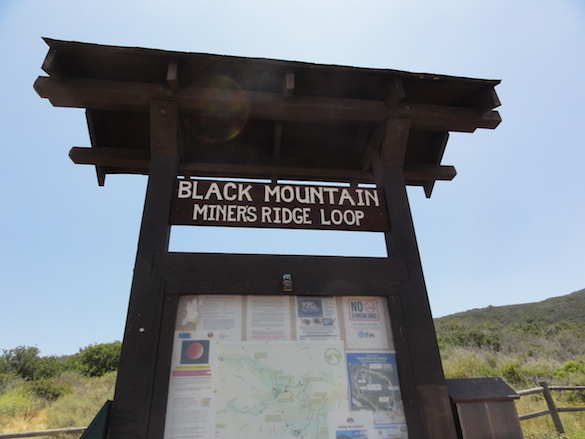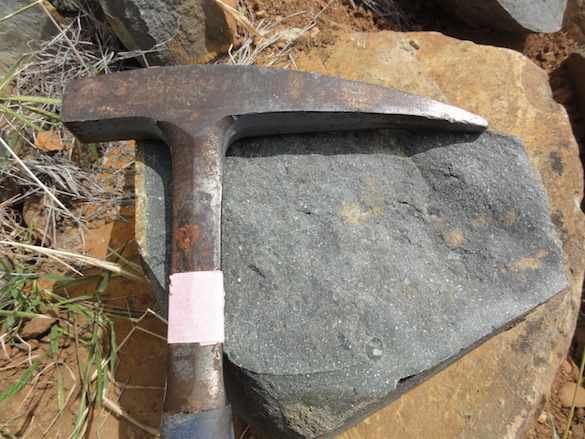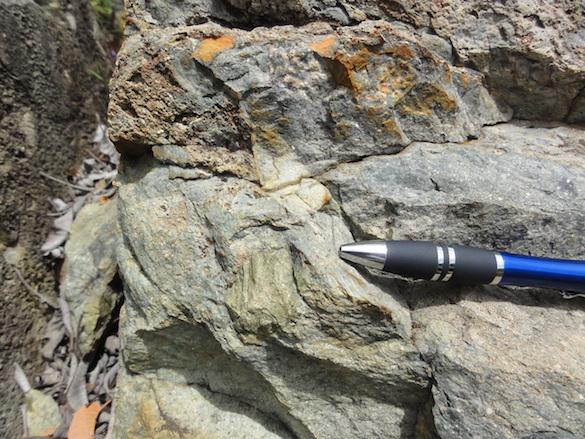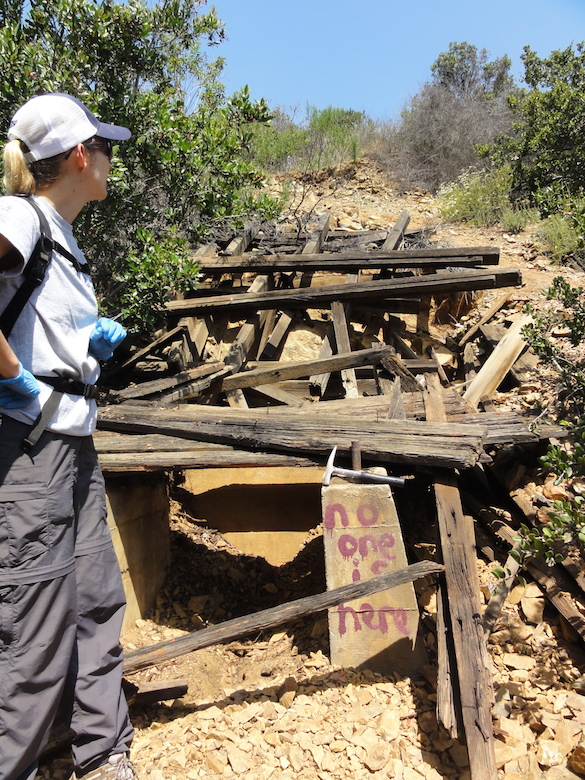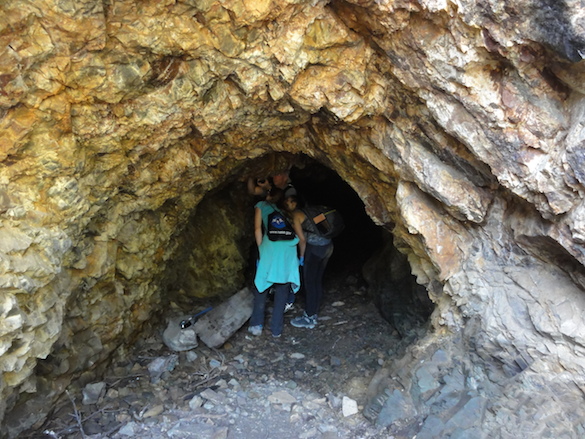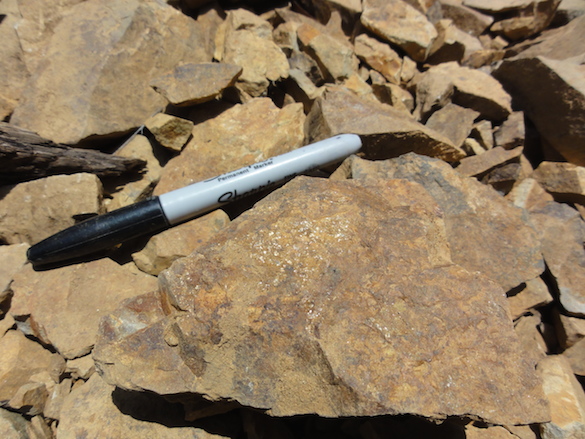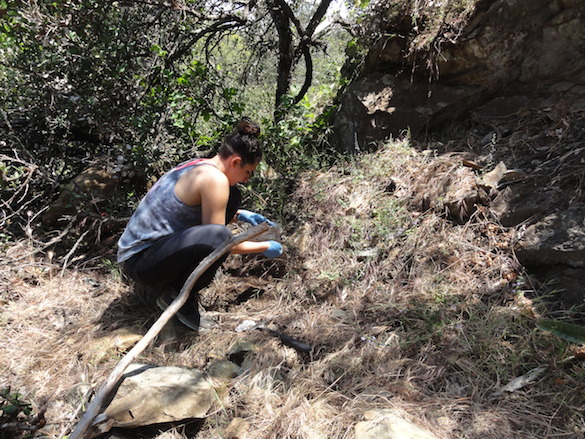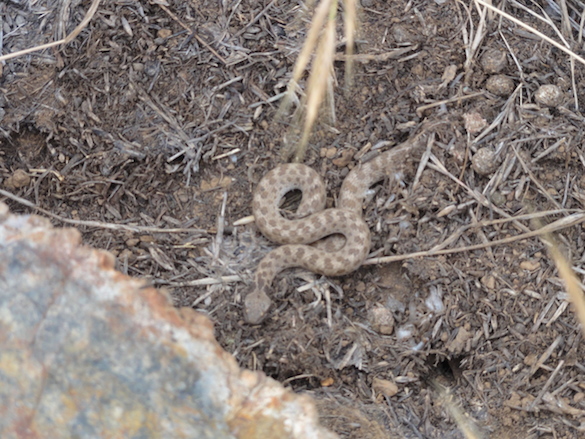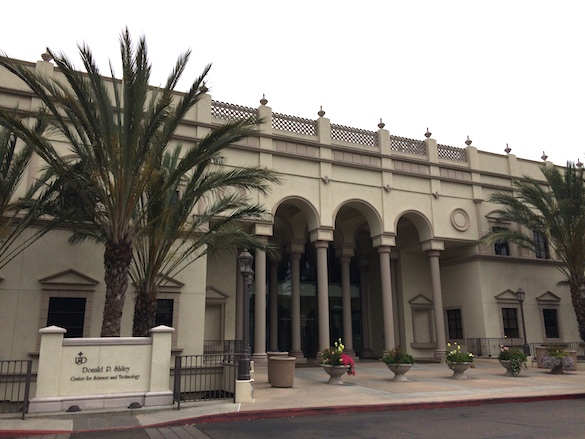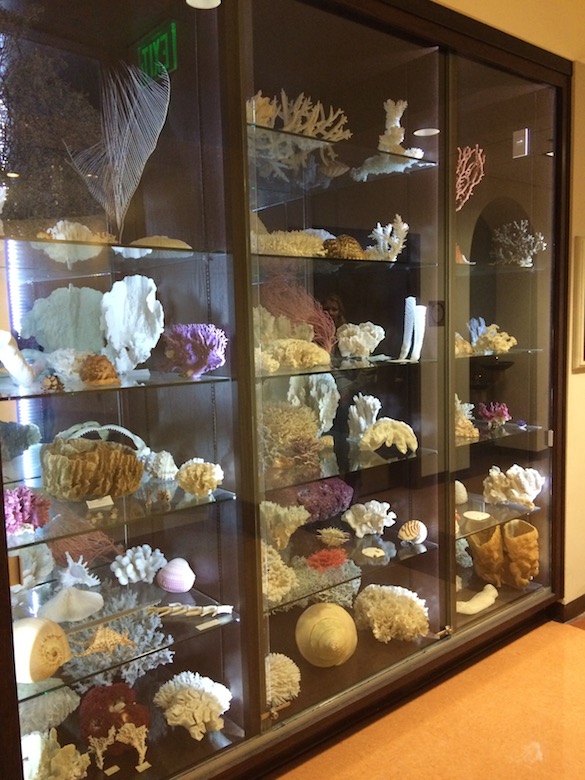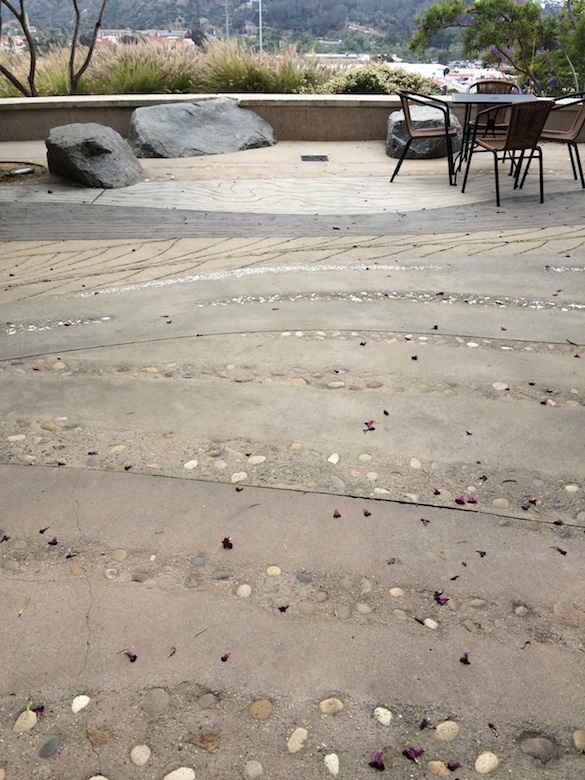 Above is an image of a carbonate hardground (cemented seafloor) from the Upper Ordovician of Adams County, Ohio. It comes from the Bull Fork Formation and was recovered along State Route 136 north of Manchester, Ohio (Locality C/W-20). It is distinctive for two reasons: (1) the many external molds (impressions, more or less) of mollusk shells, including bivalves and long, narrow, straight nautiloids, and (2) its many small borings called Trypanites, a type of trace fossil we’ve seen on this blog before.
Above is an image of a carbonate hardground (cemented seafloor) from the Upper Ordovician of Adams County, Ohio. It comes from the Bull Fork Formation and was recovered along State Route 136 north of Manchester, Ohio (Locality C/W-20). It is distinctive for two reasons: (1) the many external molds (impressions, more or less) of mollusk shells, including bivalves and long, narrow, straight nautiloids, and (2) its many small borings called Trypanites, a type of trace fossil we’ve seen on this blog before.
 In this closer view we can see the shallow external molds of small bivalve shells, especially on the left side, and the many round perforations of the Trypanites borings.
In this closer view we can see the shallow external molds of small bivalve shells, especially on the left side, and the many round perforations of the Trypanites borings.
The dissolved mollusk shells (from bivalves and nautiloids) were originally composed of the calcium carbonate mineral aragonite. This aragonite dissolved early on the seafloor, liberating calcium carbonate that quickly precipitated as the mineral calcite in the sediment, cementing it into a rocky seafloor (hardground) that was then bored by the animal that made Trypanites. This all happened because of the distinctive geochemistry of the ocean water at that time. High levels of carbon dioxide and a decreased Mg/Ca ratio dissolved aragonite yet enabled calcite (the more stable polymorph of calcium carbonate) to rapidly precipitate. This geochemical condition is known as a Calcite Sea, which was common in the early to middle Paleozoic, especially in the Ordovician. This is not the case in today’s marine waters in which aragonite is the primary calcium carbonate precipitate (“Aragonite Sea“). See Palmer et al. (1988) for more details on this process and the evidence for it.
I’m using this Ordovician carbonate hardground to introduce a new paper that just appeared this week in the Proceedings of the National Academy of Sciences (PNAS): “Decoupled evolution of soft and hard substrate communities during the Cambrian Explosion and Ordovician Biodiversification Event“. The authors are the renowned trace fossil experts Luis Buatois and Gabriela Mángano, the ace geostatistician Ricardo Olea, and me. I’m excited about this paper because it adds to the literature new information and ideas about two major evolutionary radiations: the “explosion” of diversity in the Cambrian (which established basic body plans for most animals) and the diversification in the Ordovician (which filled in those body plans with abundant lower taxa). This is one of the few studies to look in detail at the trace fossil record of these events. Trace fossils (records of organism behavior in and on the sediment substrate) give us information about soft-bodied taxa otherwise rare in a fossil record dominated by shells, teeth and skeletons. It is also the first systematic attempt to compare the diversification of trace fossils in soft sediments and on hard substrates (like the hardground pictured above).
As for the paper itself, I hope you can read it. Here is the abstract —
Contrasts between the Cambrian Explosion (CE) and the Great Ordovician Biodiversification Event (GOBE) have long been recognized. Whereas the vast majority of body plans were established as a result of the CE, taxonomic increases during the GOBE were manifested at lower taxonomic levels. Assessing changes of ichnodiversity and ichnodisparity as a result of these two evolutionary events may shed light on the dynamics of both radiations. The early Cambrian (Series 1 and 2) displayed a dramatic increase in ichnodiversity and ichnodisparity in softground communities. In contrast to this evolutionary explosion in bioturbation structures, only a few Cambrian bioerosion structures are known. After the middle to late Cambrian diversity plateau, ichnodiversity in softground communities shows a continuous increase during the Ordovician in both shallow- and deep-marine environments. This Ordovician increase in bioturbation diversity was not paralleled by an equally significant increase in ichnodisparity as it was during the CE. However, hard substrate communities were significantly different during the GOBE, with an increase in ichnodiversity and ichnodisparity. Innovations in macrobioerosion clearly lagged behind animal–substrate interactions in unconsolidated sediment. The underlying causes of this evolutionary decoupling are unclear but may have involved three interrelated factors: (i) a Middle to Late Ordovician increase in available hard substrates for bioerosion, (ii) increased predation, and (iii) higher energetic requirements for bioerosion compared with bioturbation.
Thank you to Luis Buatois for his leadership on this challenging project. I very much appreciate the way this work has placed the study of trace fossils into a critical evolutionary context.
 Figure 1 from Buatois et al. (2016): “Ichnodiversity changes during the Ediacaran-Ordovician. Ichnogenera were plotted as range-through data (i.e., recording for each ichnogenus its lower and upper appearances and then extrapolating the ichnogenus presence through any intervening gap in the continuity of its record).”
Figure 1 from Buatois et al. (2016): “Ichnodiversity changes during the Ediacaran-Ordovician. Ichnogenera were plotted as range-through data (i.e., recording for each ichnogenus its lower and upper appearances and then extrapolating the ichnogenus presence through any intervening gap in the continuity of its record).”
References:
Buatois, L.A., Mángano, M.G., Olea, R.A. and Wilson, M.A. 2016. Decoupled evolution of soft and hard substrate communities during the Cambrian Explosion and Ordovician Biodiversification Event. Proceedings of the National Academy of Sciences (in press).
Palmer, T.J., Hudson, J.D. and Wilson, M.A. 1988. Palaeoecological evidence for early aragonite dissolution in ancient calcite seas. Nature 335: 809-810.
Wilson, M.A. and Palmer, T.J. 2006. Patterns and processes in the Ordovician Bioerosion Revolution. Ichnos 13: 109-112.



















 We also learned that Dan Misinay (’16) is a pretty fair teaching assistant.
We also learned that Dan Misinay (’16) is a pretty fair teaching assistant.



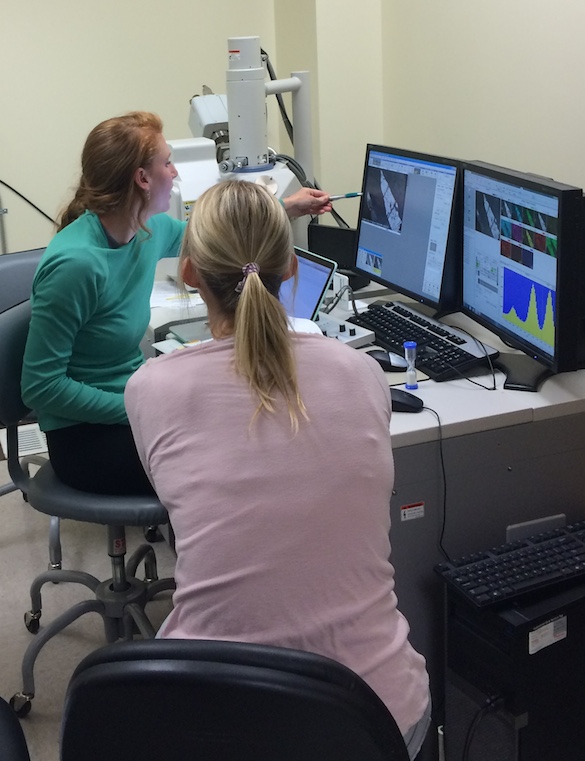
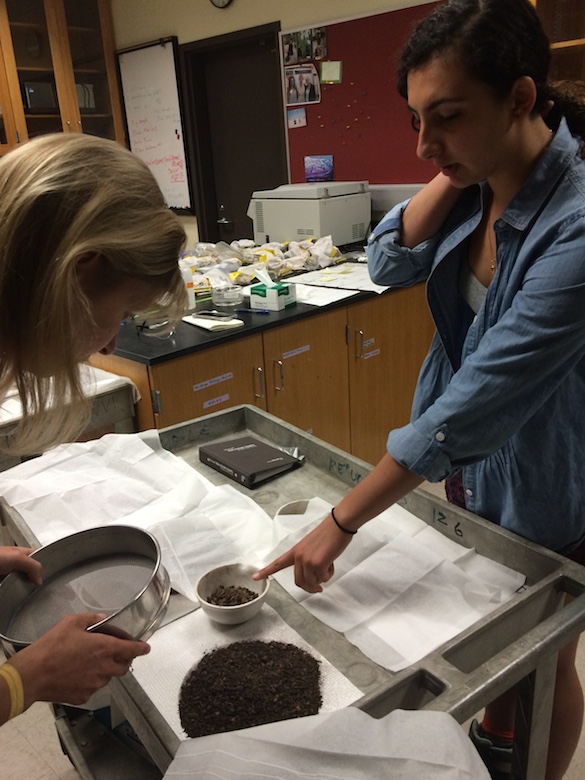
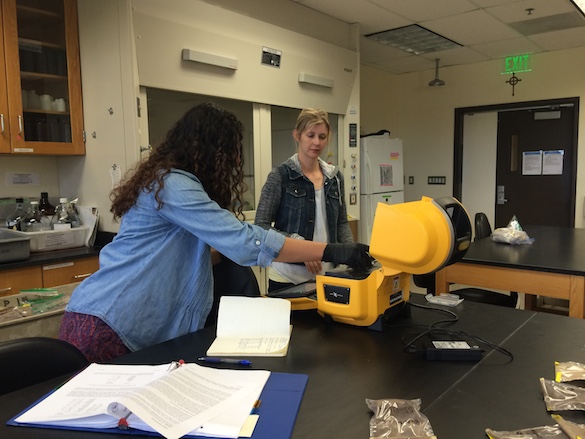




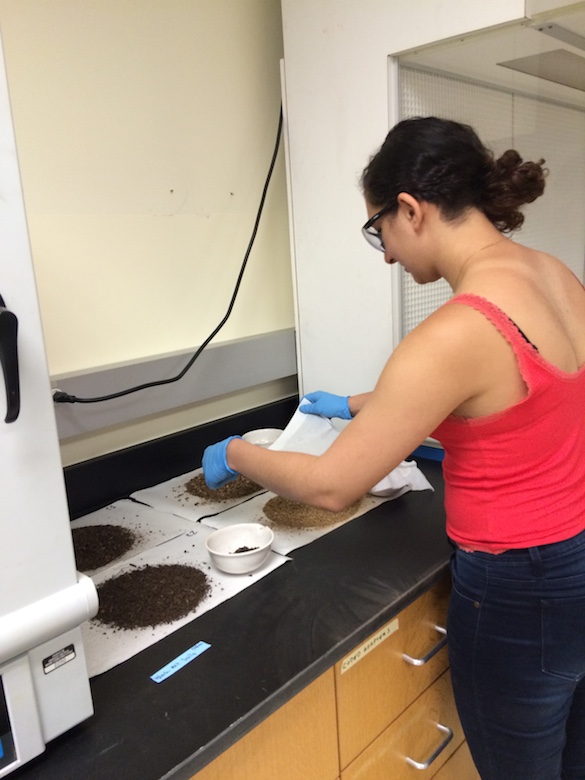
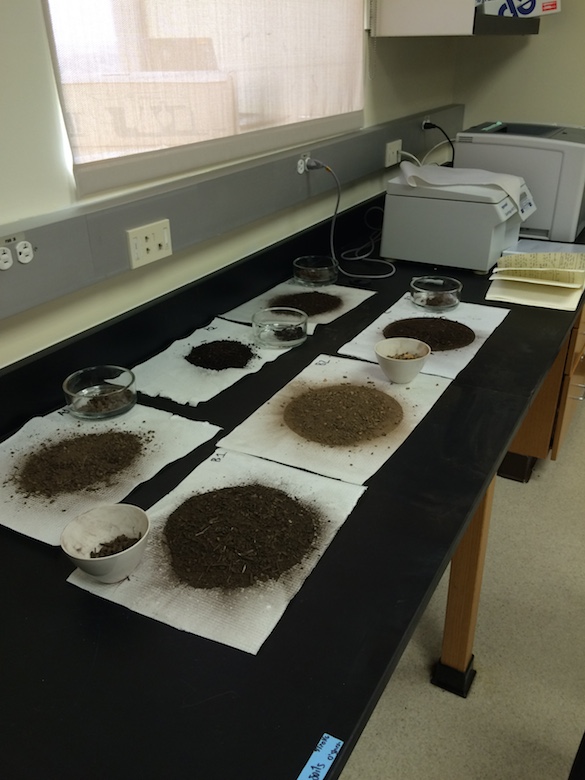
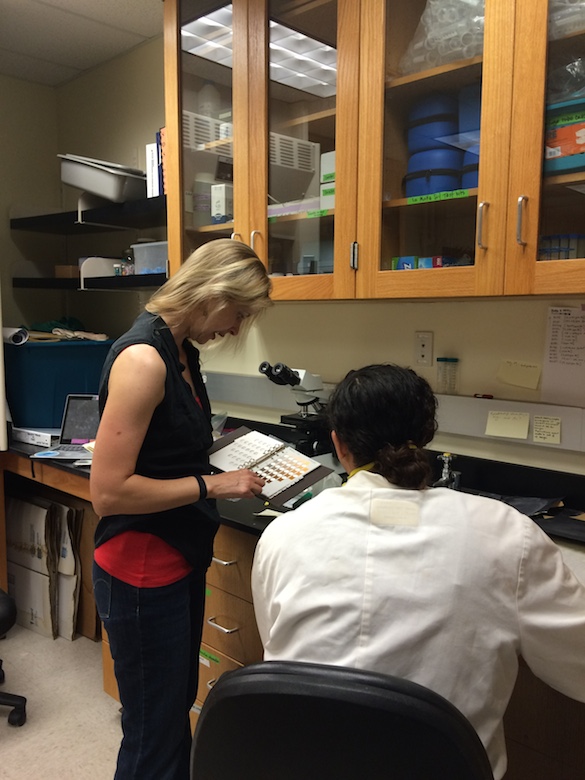
 While her samples dry, Amineh is helping prepare samples for analysis on the scanning electron microscope (SEM-EDS). Doesn’t she look like a happy geochemist?
While her samples dry, Amineh is helping prepare samples for analysis on the scanning electron microscope (SEM-EDS). Doesn’t she look like a happy geochemist?